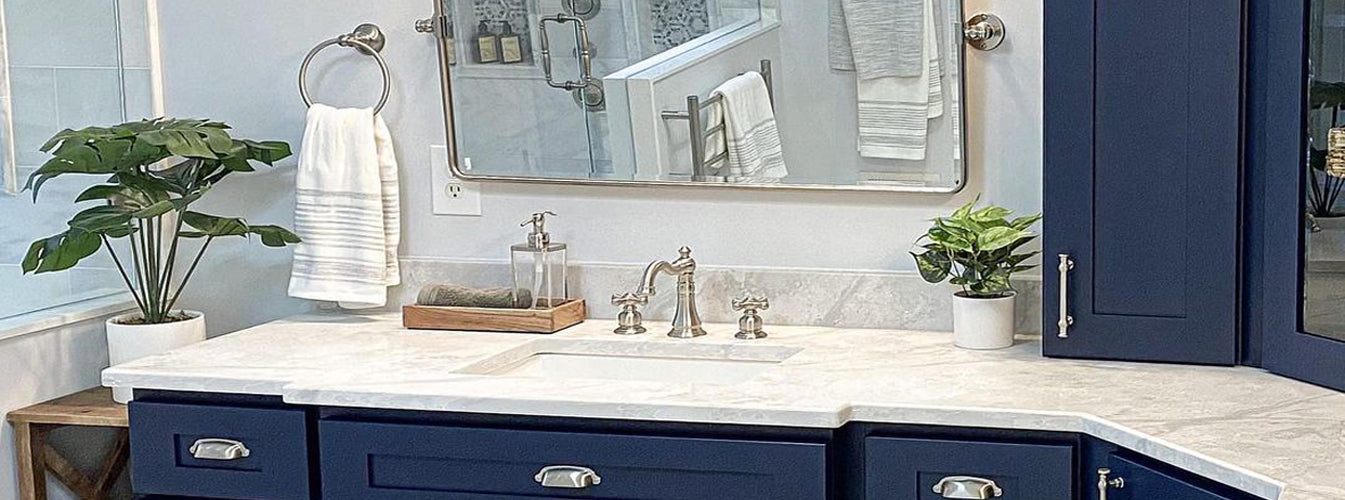Get [PRO] Pricing
Get [PRO] Pricing

Listed below are the most frequently asked questions sent by you regarding the faucets from Kingston Brass: (More questions/answers will be listed in following months).
FAQ 1
—–
Q: What cleaning products should I stay away from while cleaning my Kingston Brass Item?
A:

It is recommended that you only clean your faucet with a mild non-abrasive soap such as hand soap. Do not use any harsh or abrasive items to wipe down your KB item.
FAQ 2
—–
Q: If my KB item starts to develop calcium build or lime, what can I do to clean it?
A: clean your item with a half-and-half solution of one-part vinegar and one-part warm water. You may need a toothbrush to clean those hard-to-reach spots. To prevent calcium or lime build up. we suggest that you add a water softener to your home, not only will it make your faucet look better longer but It will make all your appliances last longer as well
FAQ 3
—–
Q: What should I use to clean my faucet?
A:

As mentioned previously, you can use non-abrasive mild soap. The surface of the Kingston Brass faucet is non-porous so there shouldn’t be any need for harsh cleaning agents. In addition, you may apply carnauba wax to the surface to help prolong its shine and extend the durability of your faucet.
FAQ 4
—–
Q: If my faucet is dripping, what should I do?
A:

If your faucet leaks through the spout when the valve is closed, you very likely have a defective cartridge or spring and washer depending on the type of faucet you have. KB sells many different type of faucets. If you know the model number of the faucet, you can call us and we will gladly identify the correct part number to order. If you do not know the model number, you can take a picture of your faucet and send it via email to techsupport@kingstonbrass.com with your contact information. Please allow 24-48 hours for a response.
FAQ 5
—–
Q: How should I flush my faucet? And how often?
A:

Debris in the line may be present even after flushing the lines.
With that, it is recommended that you flush your faucet a few days after installation and every time the water supply has been shut off for any service or repair.
The optimal method for flushing the lines is to shut off the water supply to the faucet:
a. Remove your cartridge and seats and springs.
b. Turn your water supplies on making sure to cover any surfaces that may be water damaged and deflect water into the sink.
c. Let the water run for a minute or more.
d. Replace the cartridge.
e. Remove the aerator and open both hot and cold valves.
f. Let the water run.
g. Finally, rinse the aerator and replace.
FAQ 6
—–
Q: How can I avoid freezing set screw in the faucet handle?
A: It is recommended to lubricate the set screw before assembly to prevent calcium buildup from hard water.
FAQ 7
—–
Q: My faucet is showing signs of tarnishing (especially in high mineral water region), what should I do?
A

: If you are just starting to see signs of mineral buildup, here is what you can do:
1. Mix a 3-to-1 water and vinegar solution.
2. Soak paper towels with this solution and place over the affected area.
3. Leave the wet paper towel in place overnight. You can also remove the aerator and handle and leave it soaking in the water/vinegar solution.
4. Wipe down the affected area and rinse with water.
FAQ 8
—–
Q: (RE: Tarnishing) what can I do with my brushed nickel faucet?
A: Tarnishing is caused by years of use, normal wear-and-tear and improper maintenance such as using various chemical agents for cleaning. Unfortunately, the only feasible remedy is to replace the tarnished portion of your faucet.
FAQ 9
—–
Q: For special finishes like oil-rubbed bronze, what is the best way to maintain that color?
A: Since oil-rubbed bronze is a living finish, special care should be taken beginning with the proper installation:
1. Do not use Plumber’s Putty when installing your faucet, as the fumes from the putty will breakdown the protective coating.
2. Do use a silicone base sealer such as poly seam seal.
3. After installation, keep your faucet dry after each use.
4. Periodically, apply a thin coating of Spray car wax. This will prevent the accumulation of mineral deposits on the surface of your faucet.
5. Clean with a mixture of a mild non-abrasive soap and water.
FAQ 10
—–
Q: I cleaned the faucet of mineral deposits but now I am noticing that the brass underneath the finish is exposed. What do I do?
A:

If the top layer is coming off, the best solution is to purchase a Miniwax touch-up felt tip at a local paint store. Buy it in a color that matches your faucet’s finish and touch up the affected area.
If you have a question regarding anything with Kingston Brass products, send e-mail at techsupport@kingstonbrass.com.
Click HERE to read the next series of FAQ’s (Part 2).
Click HERE to read the next series of FAQ’s (Part 3).